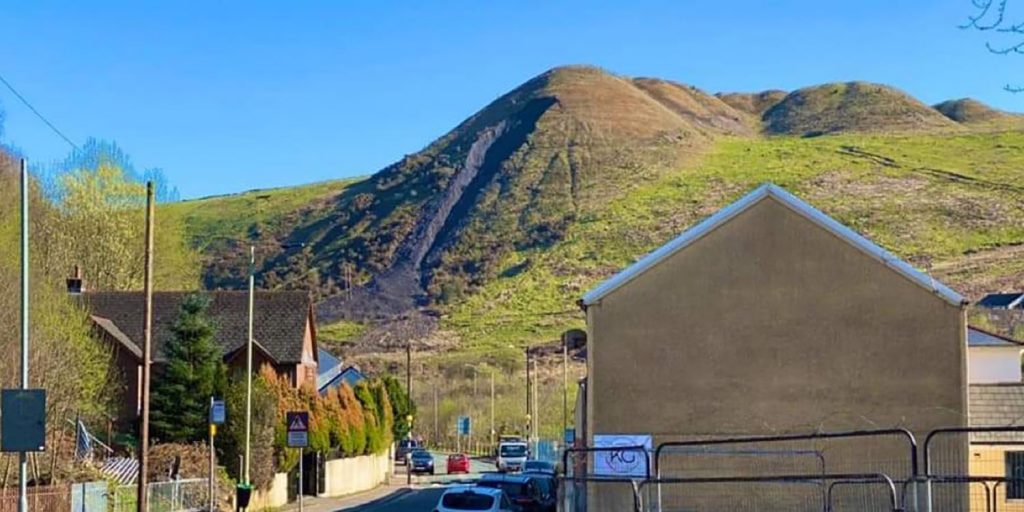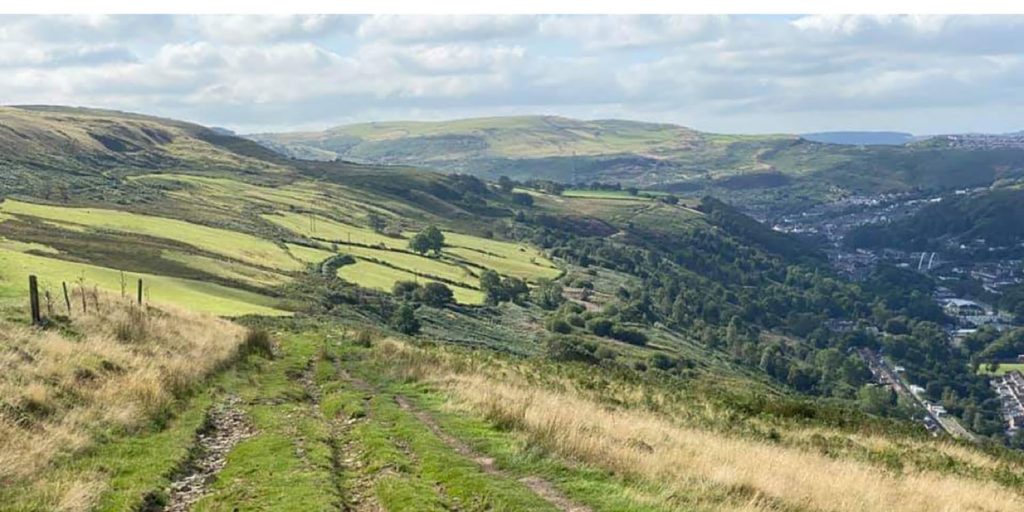Over 300 coal tips are considered high-risk in Wales and the possibility of collapse is a haunting reminder of the Aberfan disaster 55 years ago

Safety is often a primary concern when choosing somewhere to live. Checking crime rates is a familiar habit for those living in cities to gain peace of mind that their new home will be safe. But for many living in the Welsh valleys, the threat to safety emerges from somewhere quite different: the discarded coal tips from Wales’ mining past.
The risk of collapse is a palpable reality for those living by disused coal tips, the majority of which are based in South Wales. This winter, bad weather from the climate crisis could make them more unstable as water infiltrates the pile. While a landslide is unlikely, the possibility still hangs over those living in their shadow.
Coal tips are huge spoil heaps made up of waste rock and soil that was removed during the height of the coal mining industry in the 20th century. In Wales there are just under 2,500 disused coal tips, but 327 of these have recently been classified as “high-risk”. The Welsh government makes it clear that this classification does not mean there is an immediate threat, just a potential risk to safety from collapse or landslide.
The Coal Authority and local authorities have begun inspecting these category C and D high-risk tips on a more regular basis and, since March, over 70 tips in these categories have had trials with technology devices. These include sensor equipment and earth observation techniques to help detect the prospect of landslides. However, this reactive approach is not reassuring to the surrounding communities.

The reality of a fearful life
Ann Davies, a resident of Tylorstown where Storm Dennis caused a partial collapse of their coal tip last year, says that living beside them is scary and that none of these coal tips are safe. “The fear is never going to go away,” she said. “I wish I had a magic wand to remove all the tips and place them in the back gardens of the descendants of the coal mine owners who gained the profits, whilst the same descendants of the miners have been left to pay the true price of coal.”
The lack of funding adds obstacles to attacking the coal tips problem quickly. The Welsh government requested support from the UK government at the spending review earlier this year, but this was refused due to the belief that the repurposing of coal tips is a devolved issue.
In a written statement, the Minister for Climate Change, MS Julie James, said they would continue to press the UK government to provide funding, but this political block is another hurdle in progressing with the maintenance of these coal tips.
Above: This map shows the local authorities that contain high-risk coal tips in Wales. Category C and D are the highest classifications, showing a potential risk to safety. Rhondda Cynon Taf has the most sites classified as high-risk at 75. This data was published on the 26th October 2021 (Data source: https://gov.wales/coal-tip-safety)
A tragedy that can’t be repeated
For many the risk evokes haunting memories of the Aberfan disaster that took place 55 years ago. A coal tip was located above a primary school in the village and it began to slide after a period of heavy rainfall. The avalanche killed 144 people, 116 of them being children.
Sue Bevan was 10-years-old when the tragedy took place and was brought over from a neighbouring valley as a first aider, where she offered tea and biscuits to those working through the aftermath. Now, Sue has written a play called HIRAETH about the Aberfan disaster, and recently she conducted a reading underneath a coal tip in Rhondda valley. “I’m sitting there, listening to this story and thinking, ‘This could happen to us now.’” Sue took a breath and then repeated, “This could happen at this moment, while we’re here.”
The creation of this play helped Sue come to terms with her experience at the disaster as she had to do a lot of research to ensure she portrayed it accurately. She said that hearing other people read the words she had written while standing in the valleys made her process her experience at Aberfan differently.
“That was the point at which I had a reaction to it,” she said. “The following 36 hours after this reading I felt physically sick and shell-shocked. I felt like I’d had something traumatic happen to me the day before, and actually it had, because I think for the first time as an adult, I’d really engaged, heart and mind, with what I saw that day. I’m 65 and I hadn’t in all that time.”
Learn more about coal tips and the Mines and Quarries Act here:
A reactive response to the problem
The memory of the disaster clings to the sides of these tips, with the threat of a repeated catastrophe lingering at every moment. These heaps are a liability to the surrounding communities and it’s only set to increase from the poor weather that winter brings. The instability of these tips suddenly feel even more rocky.
Promises are like hot air balloons, they waft away from the problem
A spokesperson for the Welsh government assured that during this Senedd term they were committed to introducing a new primary legislation to deal with the management of coal tips and to “help address any gaps in the current framework.”
But for Ann, this is not enough: “Promises are like hot air balloons, they waft away from the problem.”
Residents of the Welsh valleys will continue to be fearful for their safety until some practical, preventable solutions are put in place. While knife crime and assault may be rife in the cities, the remains of Wales’ mining history continues to threaten those that live in the deceptive beauty of the countryside.
Learn more about the Aberfan disaster:
- LISTEN: Remembering Aberfan, a BBC Wales podcast
- READ: Aberfan: A Story of Survival, Love and Community in One of Britain’s Worst Disasters by Gaynor Madgwick
- WATCH: The Crown, season three, episode three, titled Aberfan
